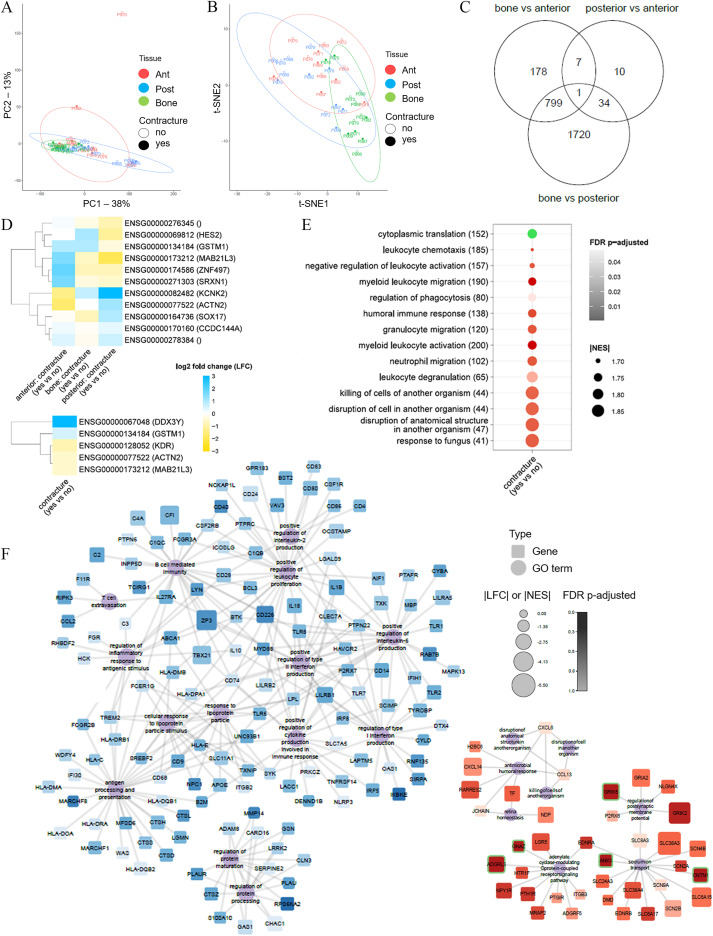
Transcriptomic characterization of posterior capsule, anterior capsule, and femoral condylar tissue highlights tissue-specific microenvironments in knee osteoarthritis


Knee osteoarthritis (OA) is extremely common and often complicated by loss of extension (flexion contracture or FC), associated with worse clinical outcomes.1, 2, 3 Once established, an FC is very difficult to reverse, leading to increased long-term morbidity.1, 2, 3 Whole-genome microarray studying posterior knee capsule biopsies in people with OA and knee FC reported an up-regulation in cellular and biological adhesion pathways consistent with an underlying activated connective tissue process, such as excess fibrous tissue production, limiting knee extension.3 Fibrous tissue is produced by fibroblasts, which in turn are derived from mesenchymal stromal cell precursors.4 Fibroblasts and mesenchymal stromal cells may therefore contribute to a pathologic tissue process in the posterior joint capsule in OA, such as capsular fibrosis, and could represent novel early targets for reducing OA morbidity. Therefore, the objectives of this study were to examine the whole-genome expression of fibroblasts and mesenchymal stromal cells within the posterior and anterior OA joint capsule and to identify genes and pathways associated with knee FC to better understand the pathophysiology of OA FC development and direct novel treatment avenues.
